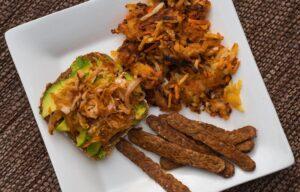Fermenting food has been a part of human history for thousands of years. It’s a way of preserving food and adding flavor, and it has been an important part of cultures around the world. In this post, we will delve into the history of fermenting food and how it has evolved over time.
Fermenting Food

The earliest evidence of fermented food dates back to 6000 BC, where ancient civilizations in the Middle East were fermenting grapes to make wine. Over time, the process of fermenting food spread to other regions, and people began to ferment a variety of foods, including vegetables, dairy products, and grains.
One of the most widespread forms of fermented food is yogurt. It is believed to have originated in the Middle East and Central Asia, and it has been a staple food in those regions for thousands of years. The fermentation process used to make yogurt involves the use of bacteria that break down lactose, the sugar in milk, into lactic acid. This gives yogurt its characteristic tangy flavor and makes it easier to digest.
Another popular fermented food is bread. Yeast, a type of fungus, has been used to ferment dough for thousands of years. The yeast consumes the sugar in the dough and releases carbon dioxide, which makes the dough rise and gives bread its characteristic texture. The first leavened bread is believed to have been made in Egypt over 5000 years ago, and it quickly became a staple food in many parts of the world.
Fermented vegetables, such as pickles, sauerkraut, and kimchi, have been enjoyed for centuries in many cultures. The process of fermenting vegetables involves soaking them in a brine solution, which creates an environment that allows beneficial bacteria to thrive and preserve the vegetables. This not only extends the shelf life of the vegetables but also enhances their flavor and adds probiotics to the diet.
Fermented dairy products, such as cheese and kefir, have been popular for thousands of years as well. The process of making cheese involves fermenting milk using bacteria and rennet, an enzyme that coagulates the milk. The resulting curds are then formed into cheese. Kefir is a fermented milk product that originated in the Caucasus Mountains and is made using a symbiotic colony of bacteria and yeast. It has become increasingly popular in recent years due to its health benefits and tangy flavor.
In recent years, fermenting food has experienced a resurgence in popularity. This can be attributed to a growing interest in traditional foodways and a desire to improve gut health. People are discovering the benefits of consuming fermented foods, such as increased energy levels, improved digestion, and a stronger immune system.
In conclusion, the art of fermenting food has been a part of human history for thousands of years. From the earliest evidence of wine in the Middle East to the popularity of cheese and yogurt in modern times, fermenting food has evolved over time and continues to be an important part of many cultures around the world. So next time you enjoy a tangy pickle or a bowl of yogurt, remember the rich history behind this ancient process.
Keywords: fermenting food, history, wine, yogurt, bread, pickles, sauerkraut, kimchi, cheese, kefir, gut health, traditional foodways.
Check out our Novel Writing Workbooks
Check out Little Tree Food Forest for articles on food forests and homesteading.
Check out FoodieScapes for articles on growing, fermenting and preserving food
Check out StoryScapes.World for articles on writing.
Subscribe to our newsletter to get information delivered to your inbox on edible landscaping, growing food and medicinal plants, growing mushrooms, foraging, fermentation, food preservation, raising small livestock, and more.






